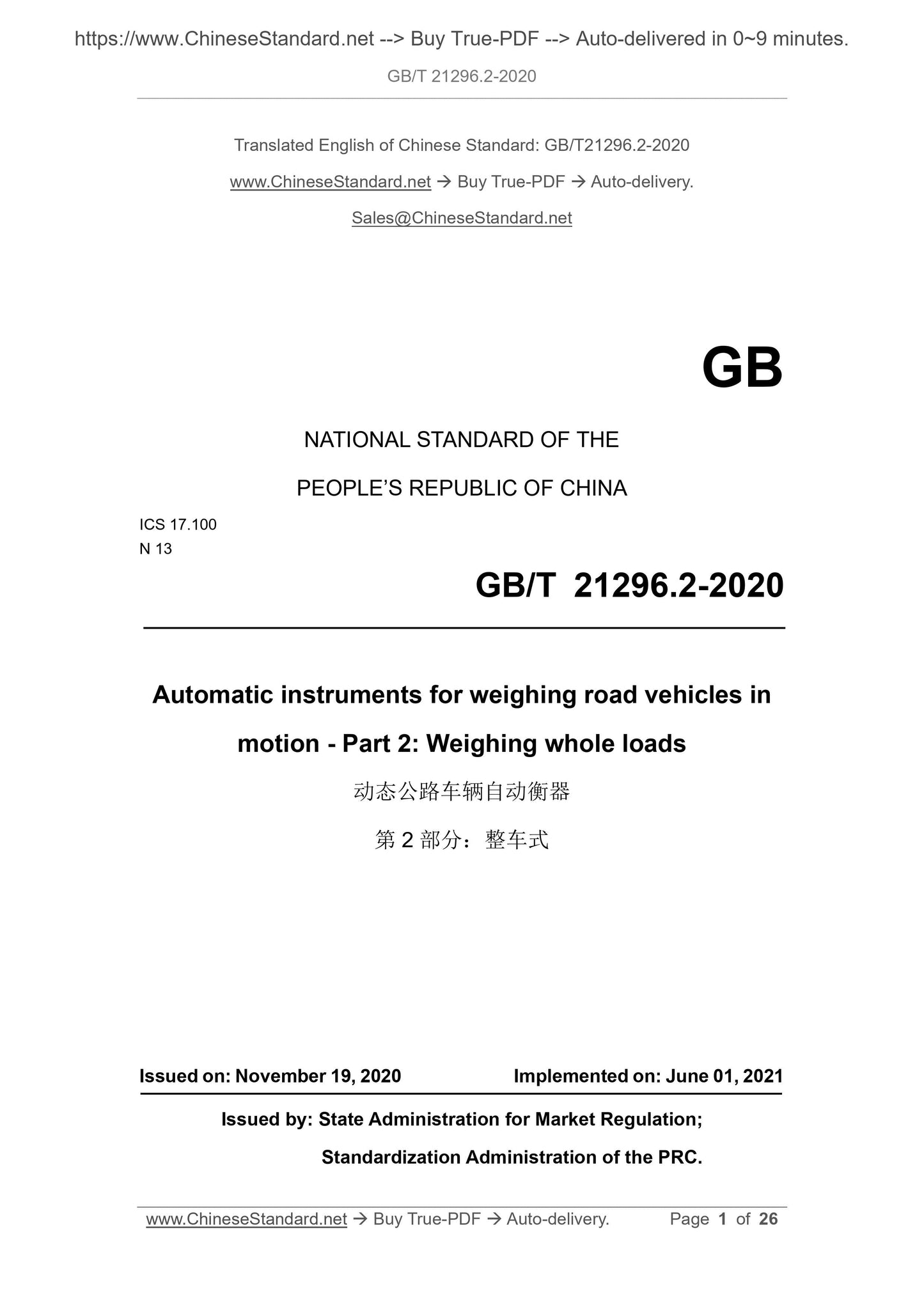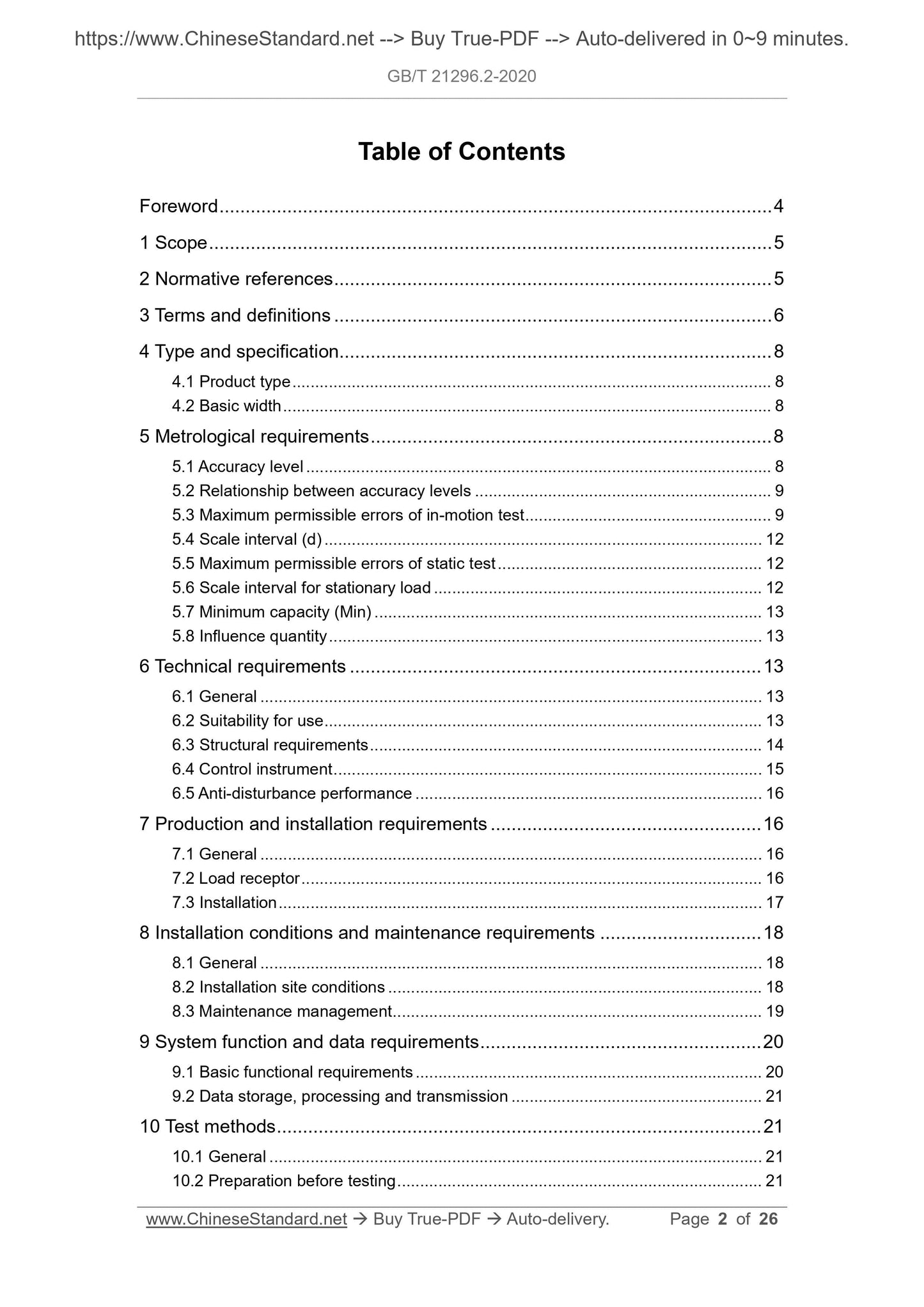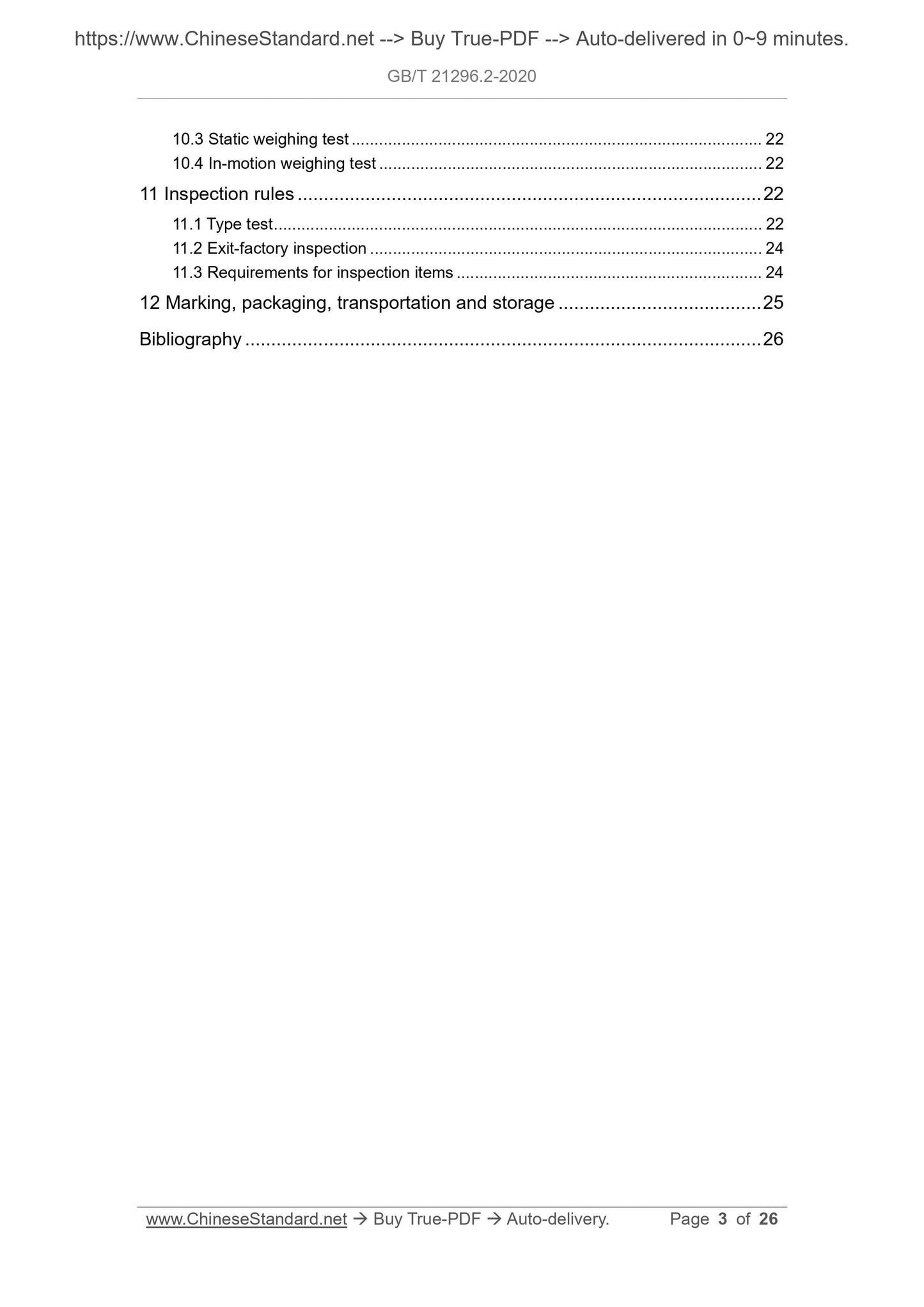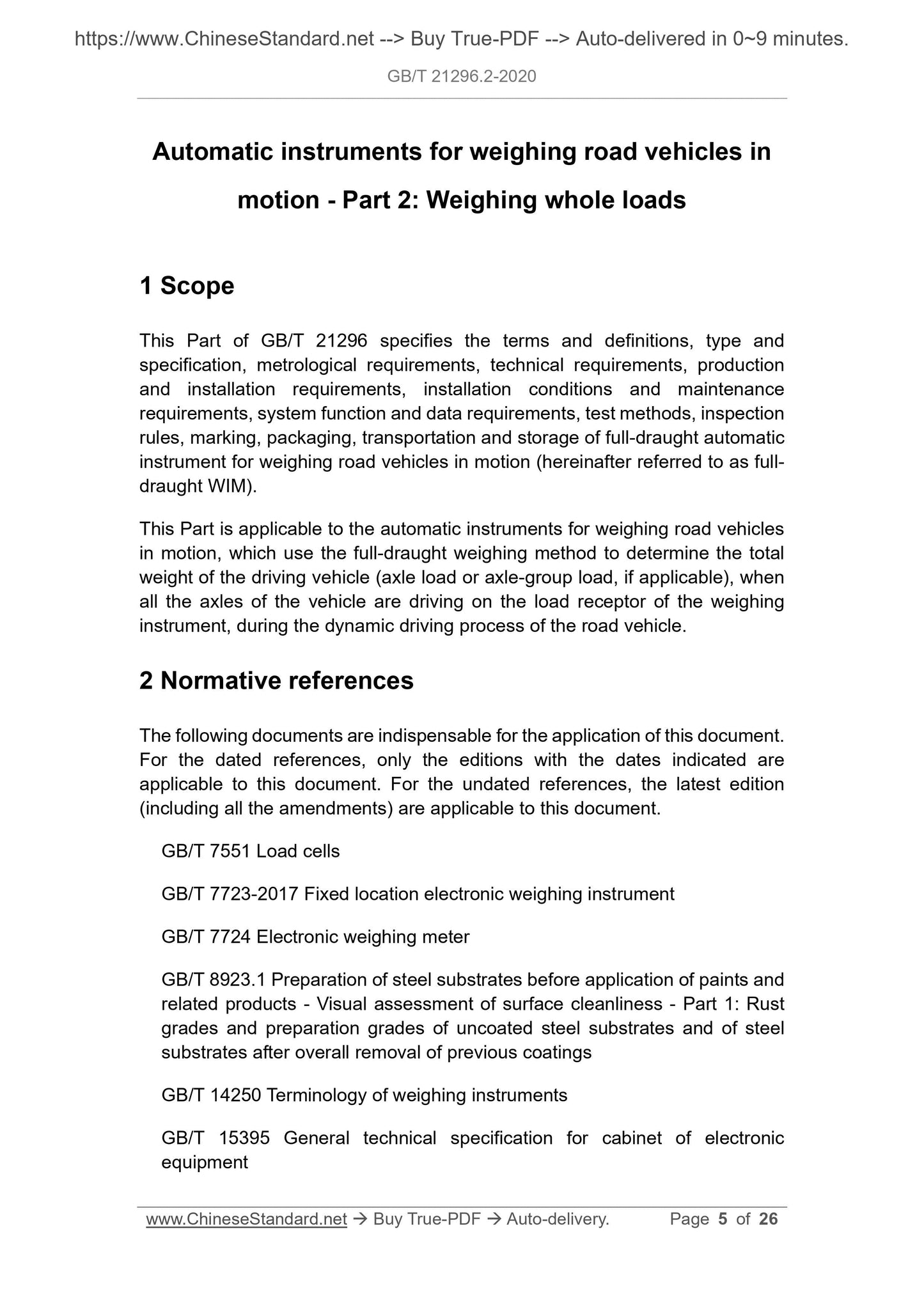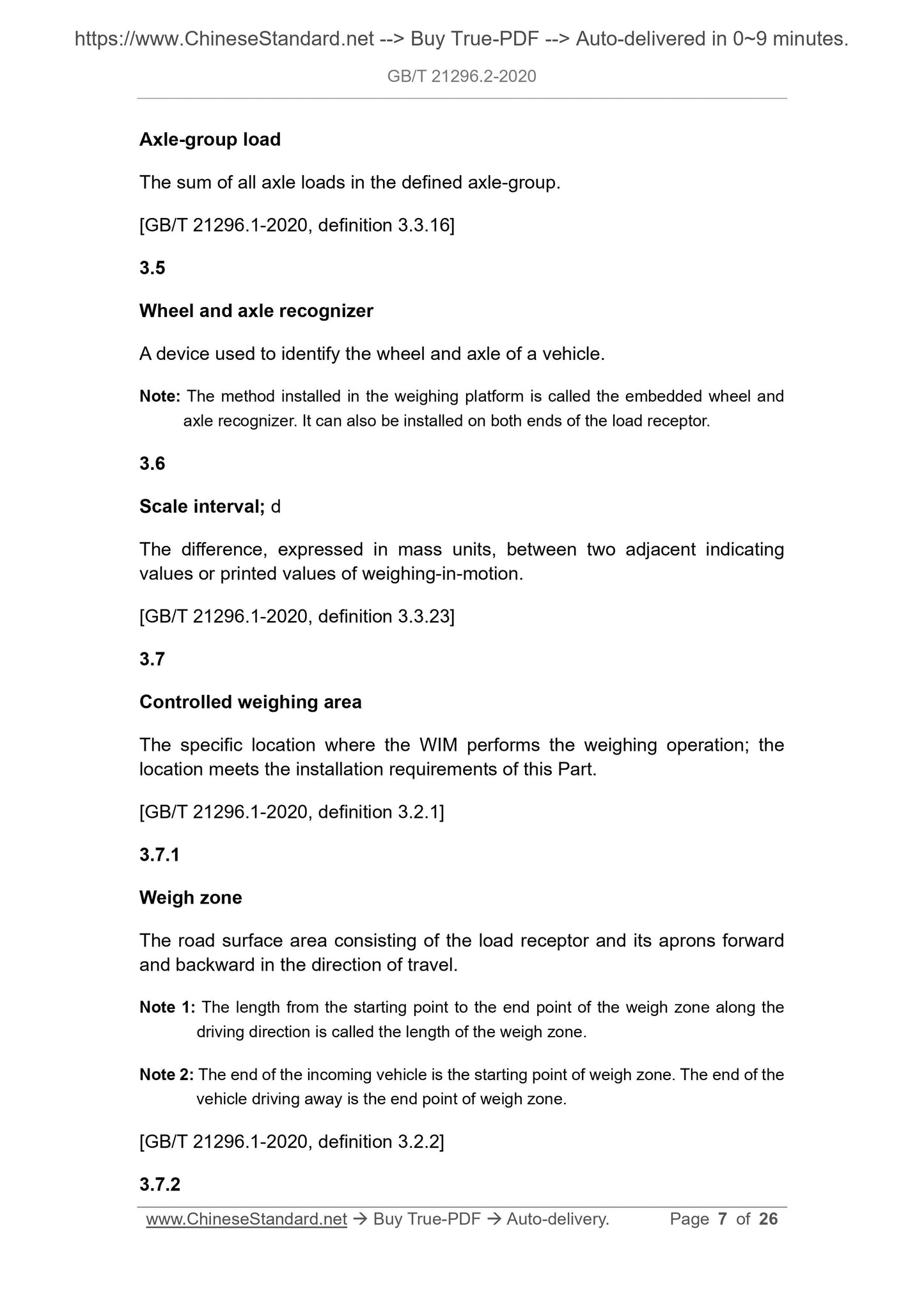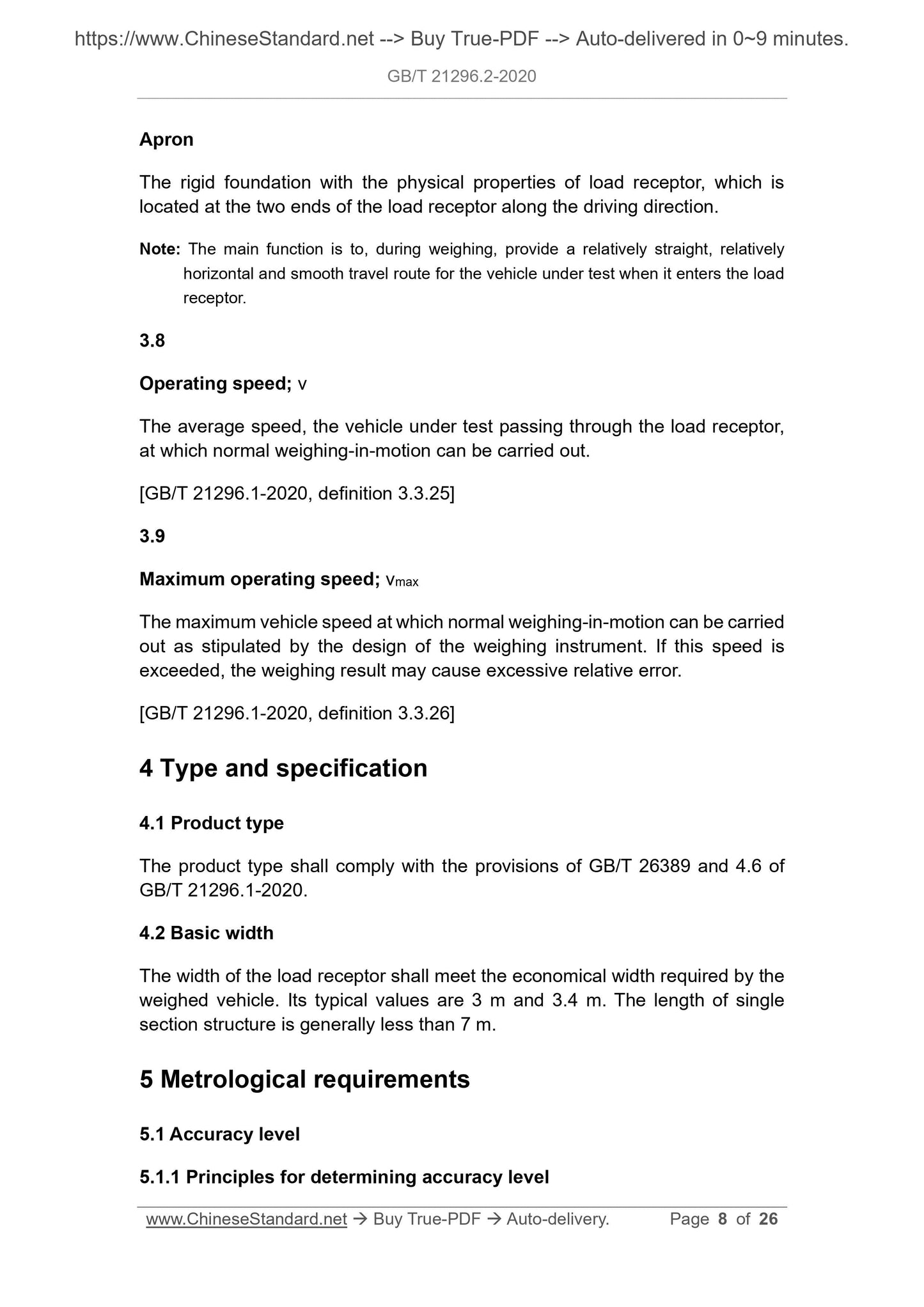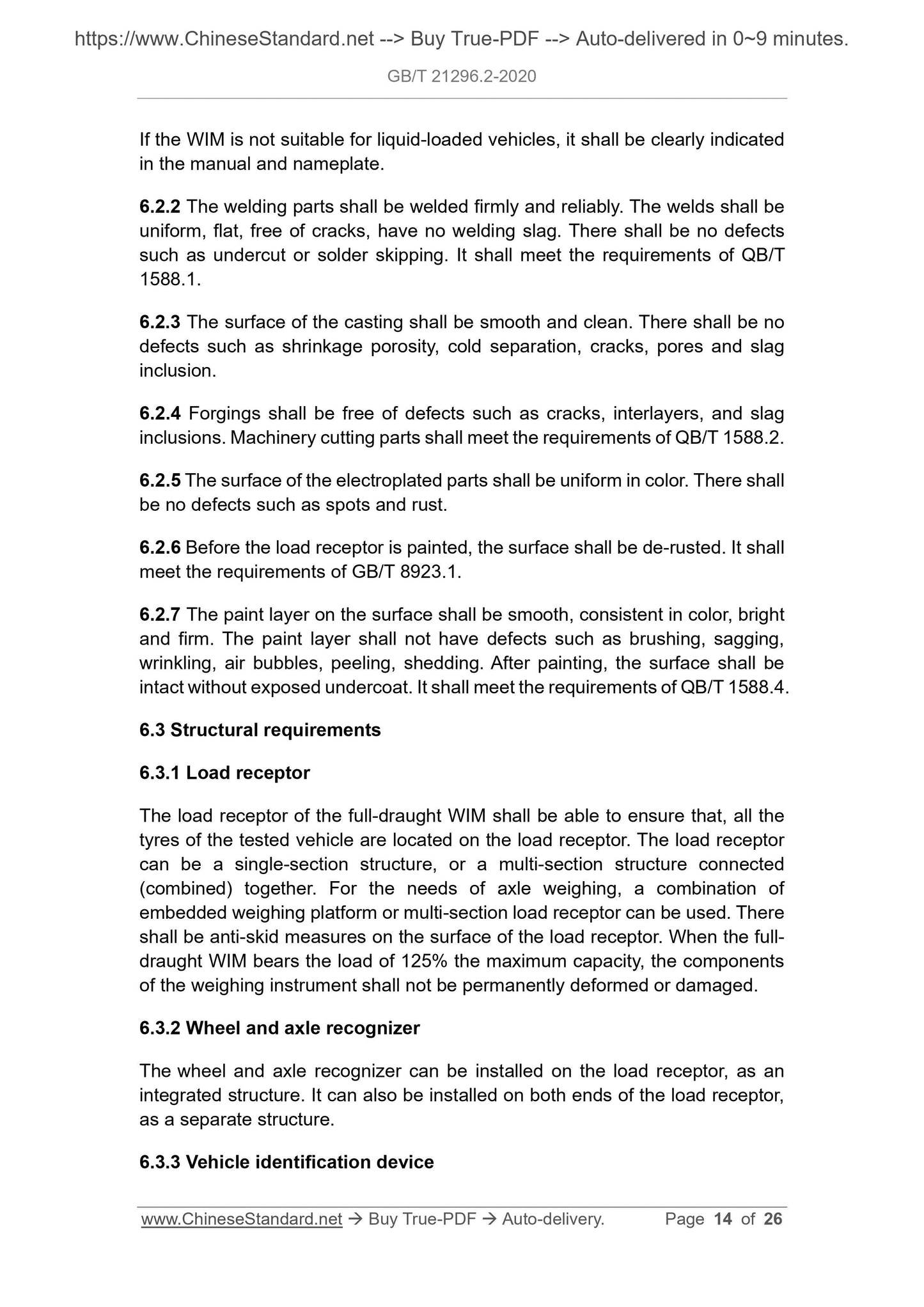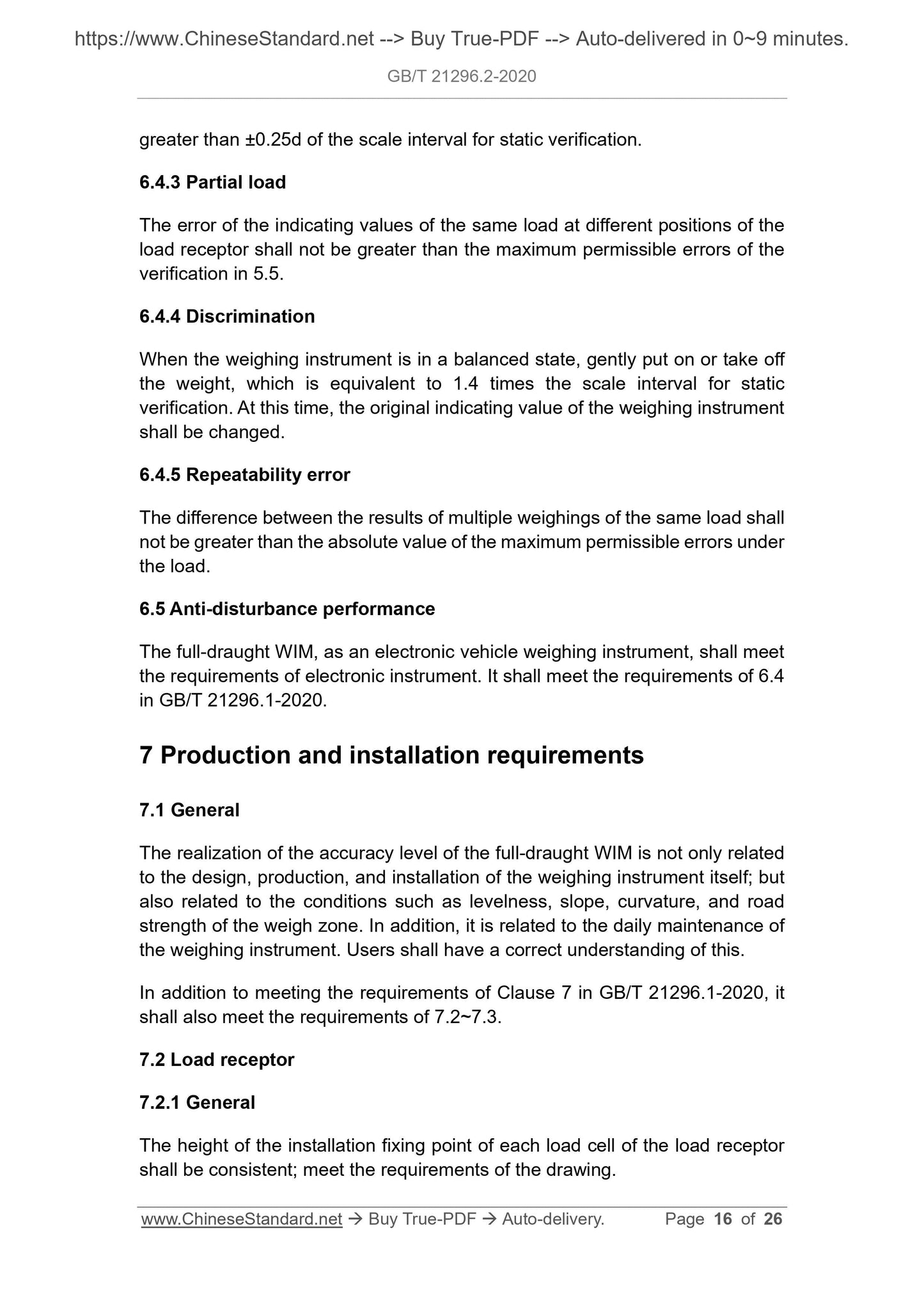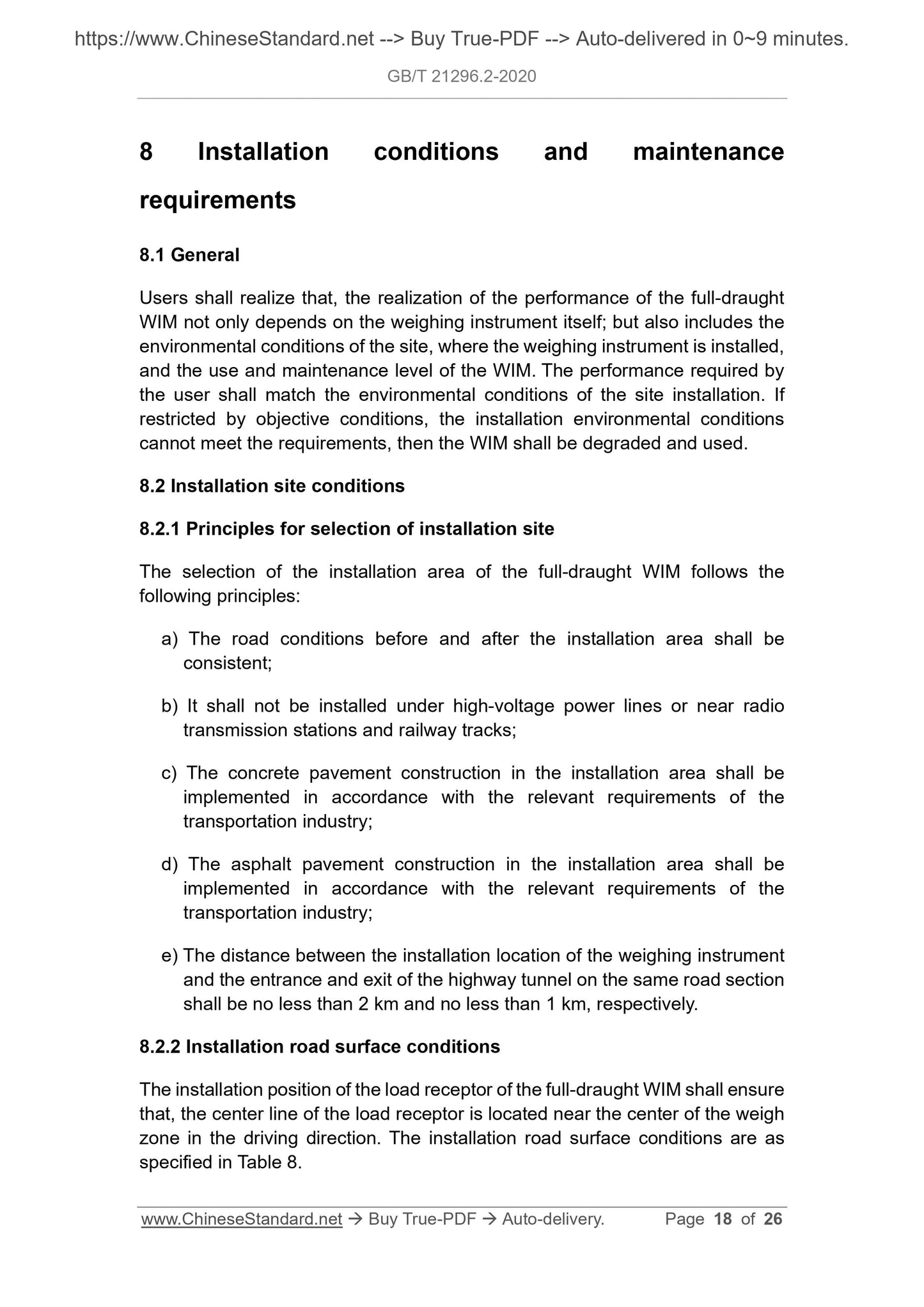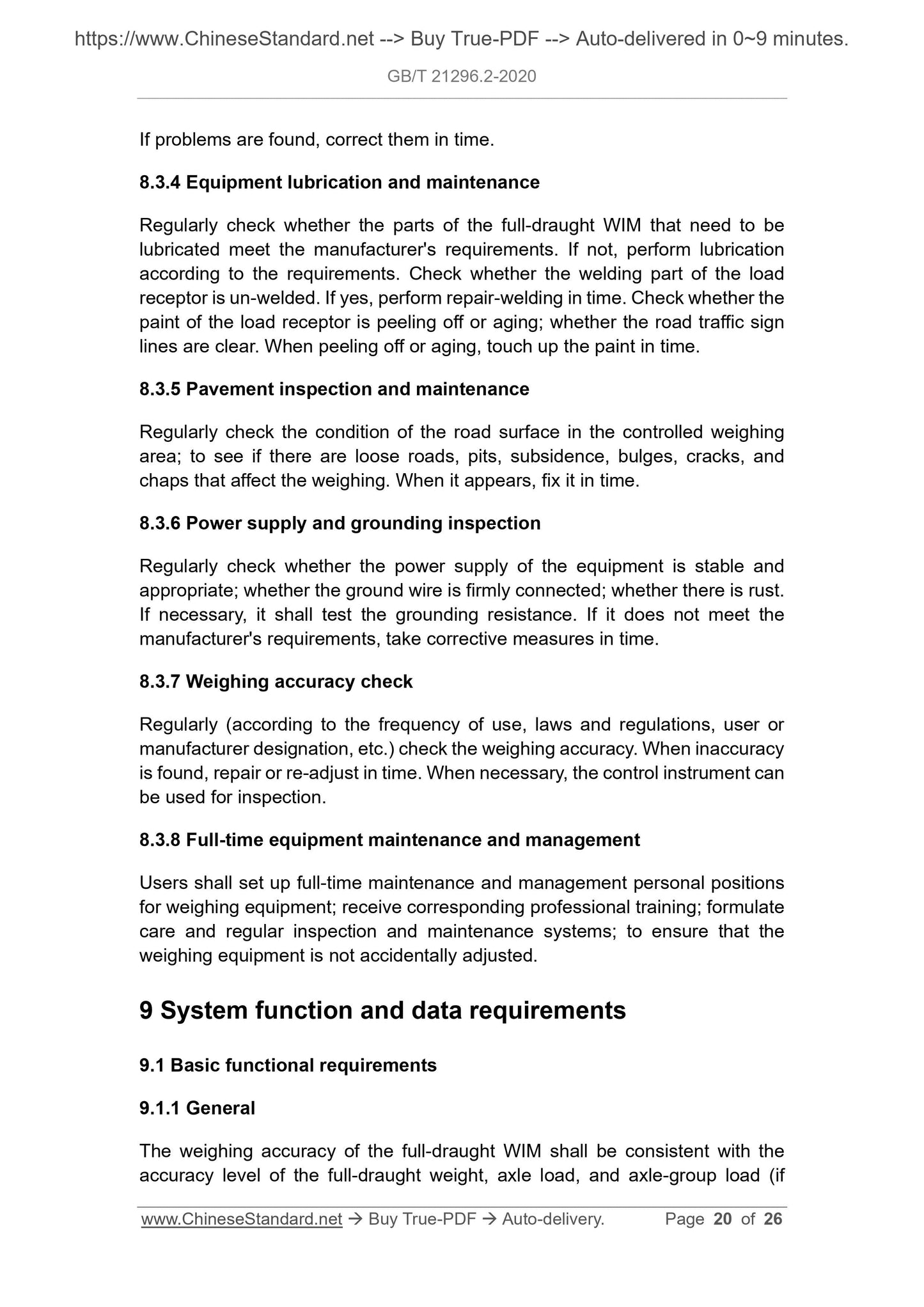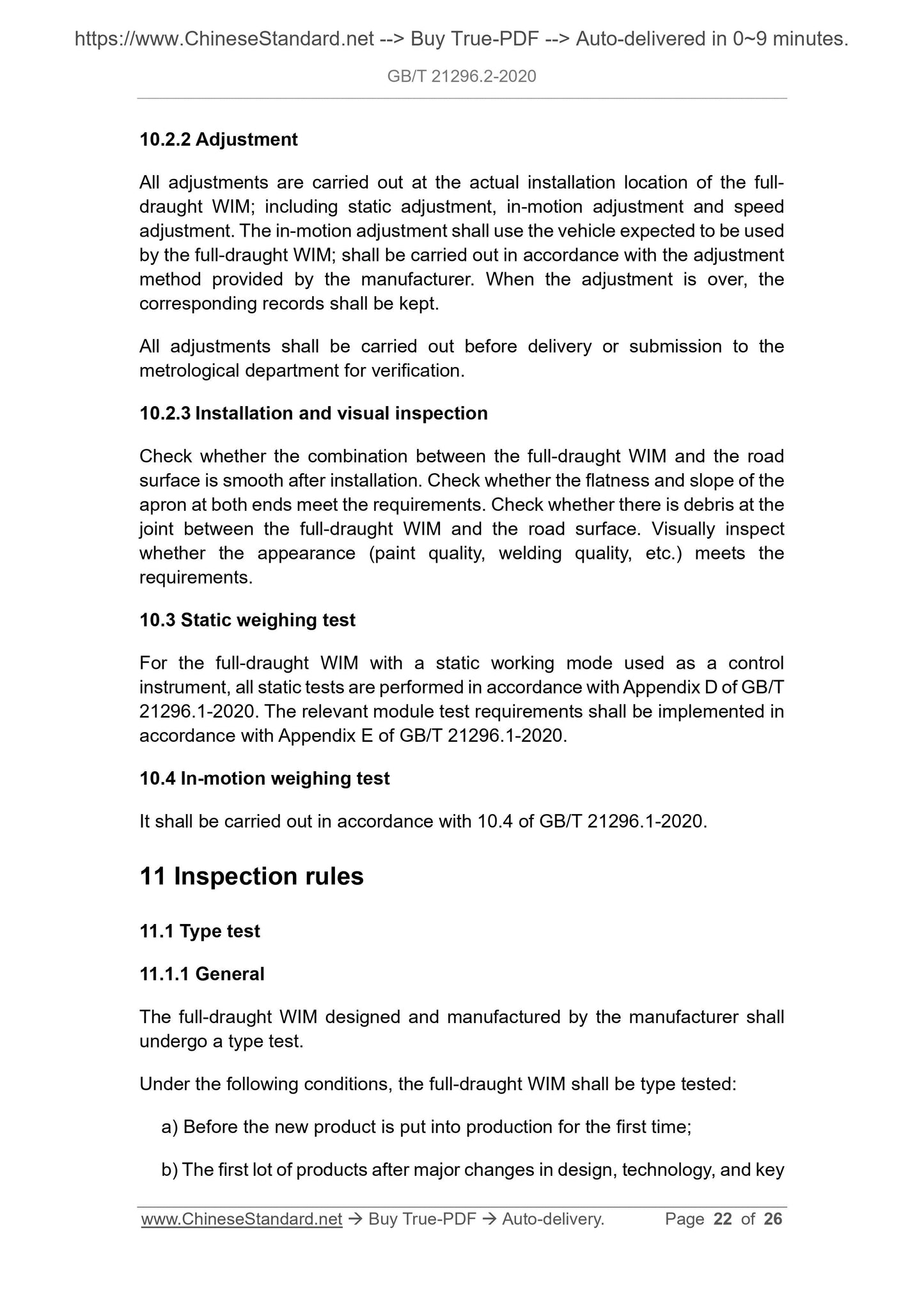1
/
of
11
www.ChineseStandard.us -- Field Test Asia Pte. Ltd.
GB/T 21296.2-2020 English PDF (GB/T21296.2-2020)
GB/T 21296.2-2020 English PDF (GB/T21296.2-2020)
Regular price
$245.00
Regular price
Sale price
$245.00
Unit price
/
per
Shipping calculated at checkout.
Couldn't load pickup availability
GB/T 21296.2-2020: Automatic instruments for weighing road vehicles in motion - Part 2: Weighing whole loads
Delivery: 9 seconds. Download (and Email) true-PDF + Invoice.Get Quotation: Click GB/T 21296.2-2020 (Self-service in 1-minute)
Newer / historical versions: GB/T 21296.2-2020
Preview True-PDF
Scope
This Part of GB/T 21296 specifies the terms and definitions, type andspecification, metrological requirements, technical requirements, production
and installation requirements, installation conditions and maintenance
requirements, system function and data requirements, test methods, inspection
rules, marking, packaging, transportation and storage of full-draught automatic
instrument for weighing road vehicles in motion (hereinafter referred to as full-
draught WIM).
This Part is applicable to the automatic instruments for weighing road vehicles
in motion, which use the full-draught weighing method to determine the total
weight of the driving vehicle (axle load or axle-group load, if applicable), when
all the axles of the vehicle are driving on the load receptor of the weighing
instrument, during the dynamic driving process of the road vehicle.
Basic Data
| Standard ID | GB/T 21296.2-2020 (GB/T21296.2-2020) |
| Description (Translated English) | Automatic instruments for weighing road vehicles in motion - Part 2: Weighing whole loads |
| Sector / Industry | National Standard (Recommended) |
| Classification of Chinese Standard | N13 |
| Classification of International Standard | 17.100 |
| Word Count Estimation | 18,194 |
| Date of Issue | 2020-11-19 |
| Date of Implementation | 2021-06-01 |
| Quoted Standard | GB/T 7551; GB/T 7723-2017; GB/T 7724; GB/T 8923.1; GB/T 14250; GB /T 15395; GB/T 21296.1-2020; GB/T 26389; QB/T 1588.1; QB/T 1588.2; QB/T 1588.4 |
| Regulation (derived from) | National Standard Announcement No. 26 of 2020 |
| Issuing agency(ies) | State Administration for Market Regulation, China National Standardization Administration |
| Summary | This standard specifies the terms and definitions, models and specifications, measurement requirements, technical requirements, production and installation requirements, installation conditions and maintenance requirements, and system functions of vehicle-type dynamic road vehicle automatic weighing instruments (hereinafter referred to as vehicle-type dynamic vehicle scales). And data requirements, test methods, inspection rules and marking, packaging, transportation and storage. This standard applies to the dynamic driving process of road vehicles, when all the axles of the vehicle are driving on the load carrier of the weighing instrument at the same time, the whole vehicle weighing method is used to determine the dynamics of the total weight of the driving vehicle (axle load or axle group load-if applicable) Automatic weighing machine for road vehicles. |
Share
